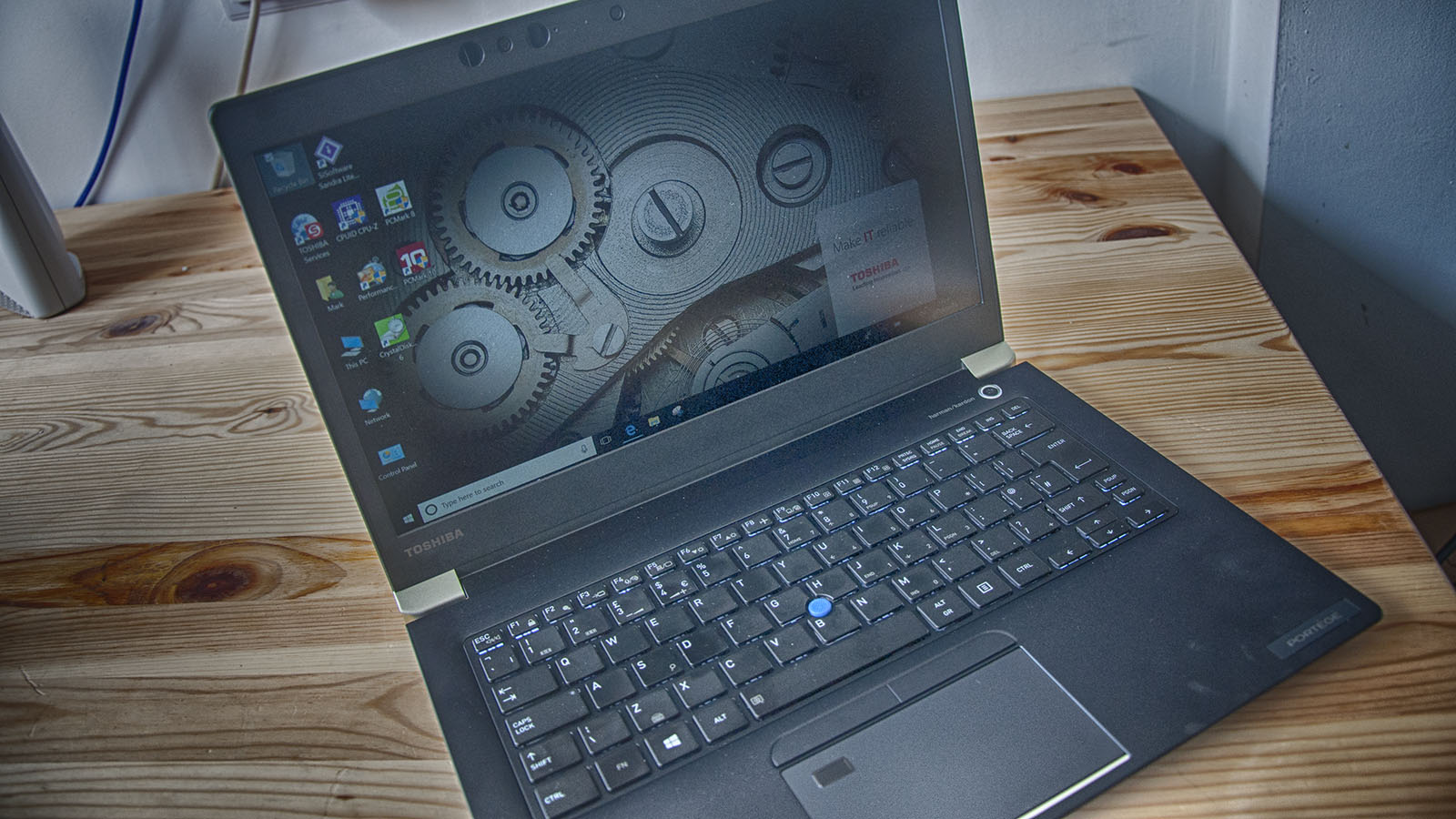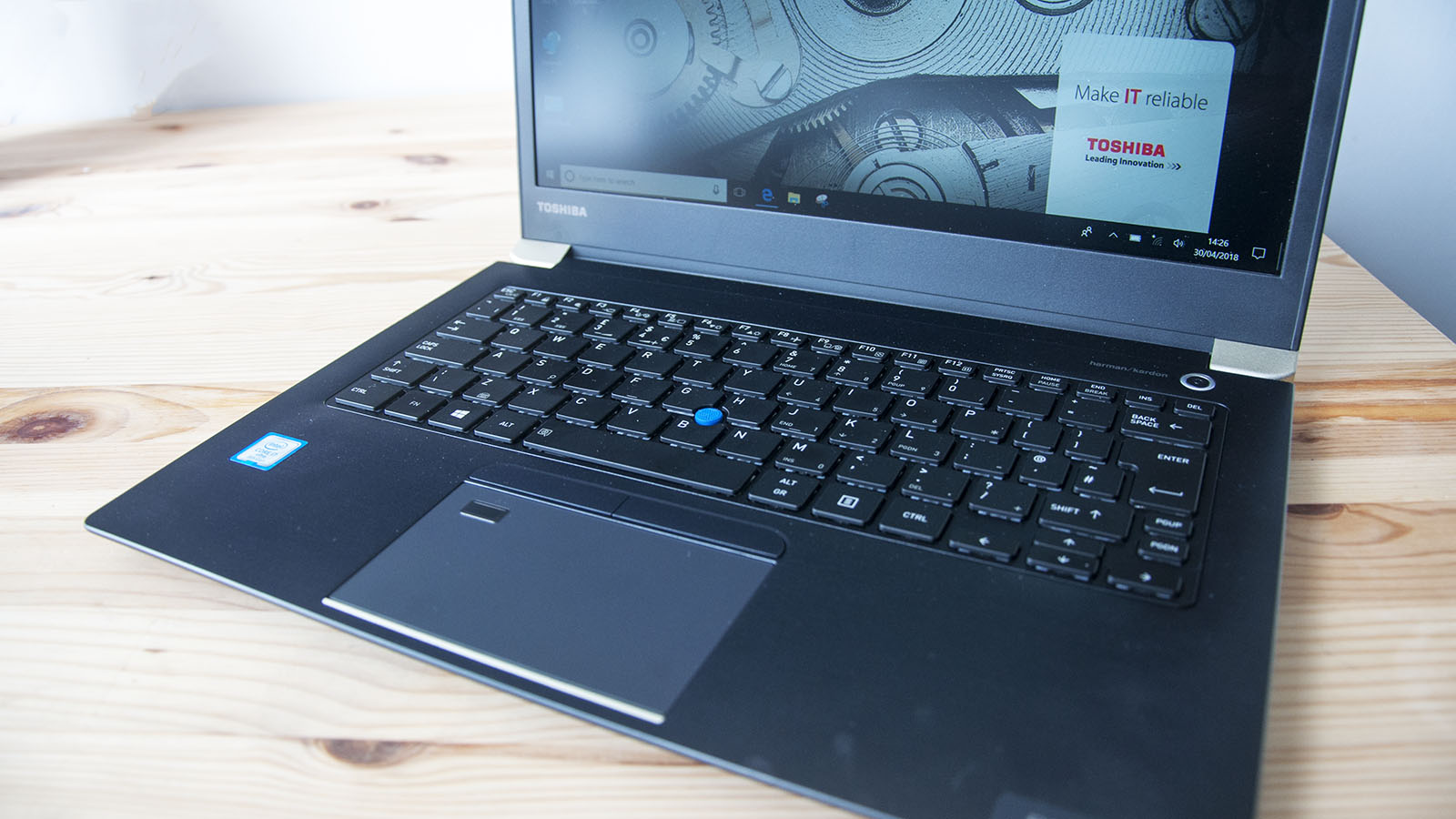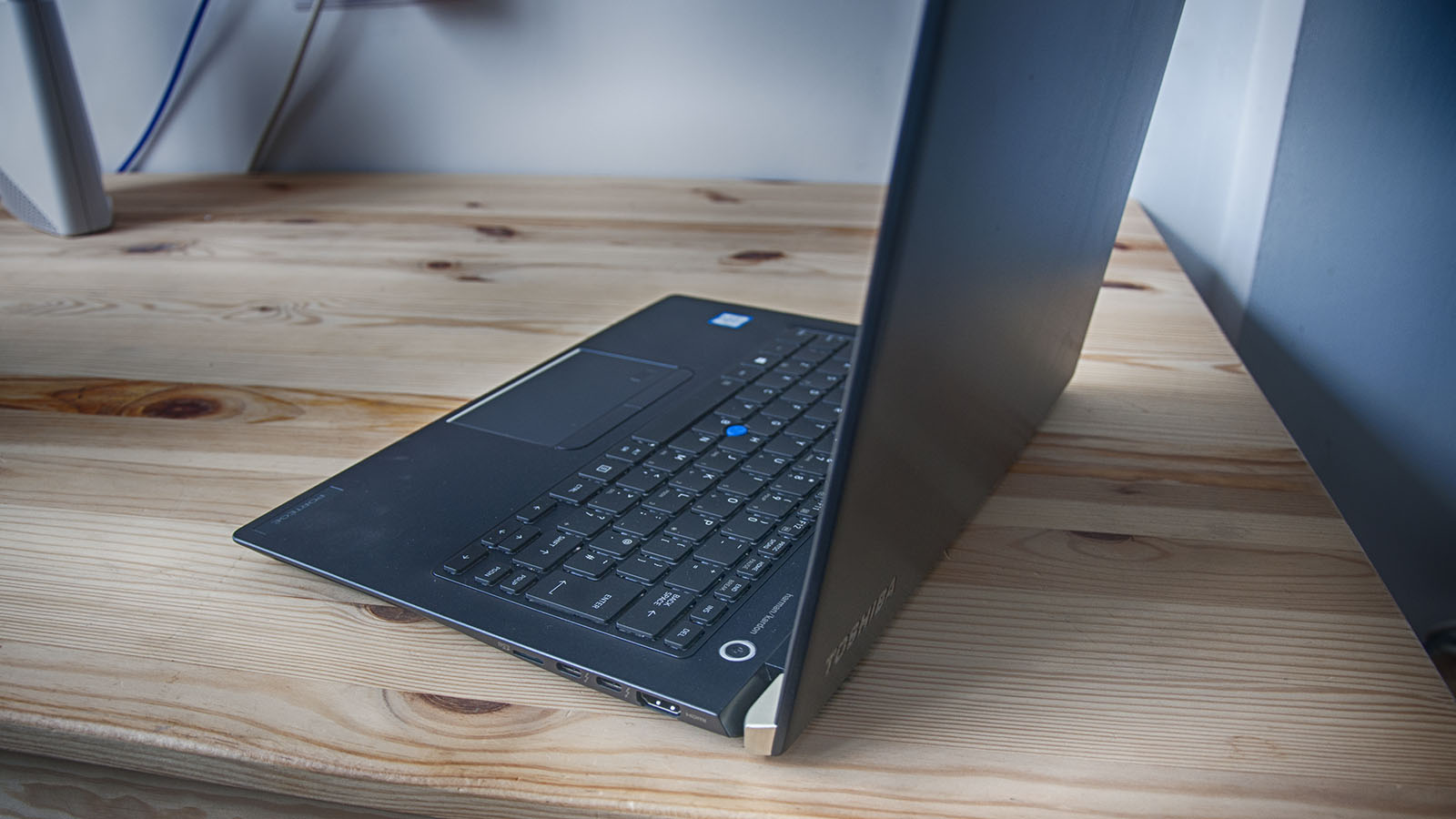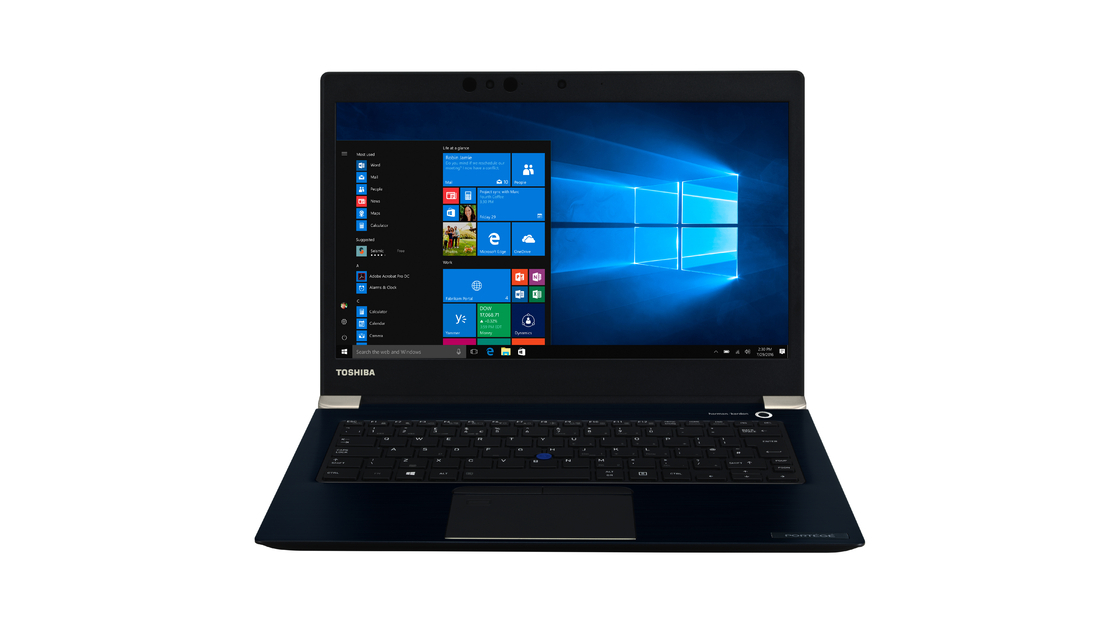TechRadar Verdict
Toshiba packed the latest technology and the most powerful options in the Portégé X30-E-12H making it ideal for the power user who doesn’t want to feel performance compromised away from their desktop system.
Pros
- +
High-performance computing
- +
Great touchpad and keyboard
- +
Type-C charging
Cons
- -
Overly thin display
- -
Older NVMe drive tech
Why you can trust TechRadar
With Intel 8th-gen hardware now available, system builders are rushing to use these CPUs, and Toshiba is one of those keen to offer the latest technology to its business customers. The new silicon is being rolled out over the Tecra, Satellite Pro and the Portégé series, on both the X20 and X30 models.
Today we’ll be looking at a flagship design, the Portégé X30-E-12H, and determining if the power contained in this highly portable device is priced seductively enough for the discerning business user.
Price, availability and value
Regarding pricing in the UK, the X series varies between £799 (around $1,079) and £1,699 ex VAT (around $2,295) . The X30-E-12H is top spec, therefore expect to shell out £1,699 ex VAT if you want one tricked out like the review model.

In the US, the 12H variant of the X30 isn’t an option that customers can select on the Toshiba site. The nearest alternative is a 13H model (13.3-inch display) and configured as per the review hardware that has an MSRP of $2,949 (£2,170).
When asked on this point, Toshiba stated that the US division could make any variant to almost any spec, should a customer specifically want this or any other permutation on processor, memory, storage and screen size.

Design
High specification laptops for business users are always a compromise to a degree. Because great power doesn’t always come with any responsibility, or in the case of many machines, enough battery capacity to drive for long at full speed.
There is also a narrow path to tread with regards to styling, where business customers like things to look new and modern, but not so radical that the laptop seems flashy or ostentatious.
Those thoughts go a long way in explaining why from the outside, the X30-E-12H isn’t much different from the previous ‘D’ equipment. Because if the customers like it, why change it?
The X30-E-12H feels like a finely honed tool, and that starts with the keyboard and touchpad, both of which are of the highest quality.
The touchpad, in particular, is one of the best we’ve tried, and the surface has the ideal level of texture that you can make subtle movements without having to mess with the device’s sensitivity.
There are dedicated buttons at the top of the pad, but the bottom edge also flexes to provide the same functionality by another means. Including in this model is a fingerprint reader as part of the touchpad, and other security options are provided using binocular infra-red cameras that allow Windows Hello to recognize the owner.
The keyboard is excellent and allows a decent word rate to be achieved by a practised key basher.
The ports are organized in a mostly logical way down both sides, avoiding the rear and the front. That both USB Type-C (Thunderbolt 3) ports got put on the same side is unfortunate, but this is how the ‘D’ series had them, and it does make sense for continuity.
As a user experience, the X30-E-12H has that it-just-works motif, where the screen is easy to see and the system boots very rapidly when you need it.
And, unless you stress test it, the notebook is also very quiet, even when playing back HD video or performing typical office tasks.
Initially, we thought that there wasn’t much to dislike here, but we eventually found a few minor flaws.

There is one feature that doesn’t meet the exacting standards that the X30 exudes, and that’s the screen.
From a viewing perspective, there isn’t anything substantially wrong with the panel Toshiba provided. It’s bright, sharp and the color spectrum isn’t washed out or oddly tinted.
But the panel is held in a remarkably thin structure, so skinny that it flexes when even modest force is applied.
In most laptops, an accident with the screen usually involves breaking the hinges. On this machine, we’d give good odds that the screen would break long before the hinges failed. Toshiba made the hinges travel all the way to 130 degrees, almost teasing that the machine will go flat without actually delivering that.
A real concern is what would happen if you left a pen or other object on the keyboard and forced the lid down inadvertently. The result might not be pretty, and also expensive to resolve.
We’re also unconvinced by the inclusion of Windows Hello technology. Or rather, we suspect that most business customers won’t use it.
Business people can often be mistrusting of a system that watches you all the time, unsurprisingly. They’re more likely to embrace fingerprint, palmprint or other security options.
Here is the Toshiba Portégé X30-E-12H configuration sent to TechRadar Pro for review:
CPU: Intel Core i7-8650U Quad-Core 1.9GHz (Turbo 4.2GHz)
Graphics: Intel HD Graphics 620
RAM: 32GB DDR4 RAM (2400MHz)
Screen: 12-inch Full HD touchscreen
Storage: 1TB PCIe NVMe SSD
Ports: 2 x USB 3.1 Type-C Gen 2 (Thunderbolt), 1 x USB 3.0 (sleep-and-charge), 1 x HDMI, microSD card slot, headphone/mic jack
Connectivity: 802.11ac Wi-Fi, Bluetooth 4.2
Camera: 0.9MP+IR cam supporting Windows Hello
Weight: 1.05kg (2.31lb)
Size: 332 x 229 x 16.9mm (W x D x H)
Battery: 3-cell lithium-ion
Specifications
The specifications of the review model have the pedal pushed hard to the floor. We’re talking a top-of-the-line Intel 8th-generation Kaby Lake R class processor, with a base clock of 1.9GHz and a turbo of 4.2GHz.
That’s connected to 32GB of 2400MHz DDR4 RAM and a 1TB NVMe SSD that makes loading applications and data practically instantaneous.
If we compare this feature set to competitor products, it’s on a very similar level to the Lenovo ThinkPad X280, Dell Latitude 5490 and Fujitsu Celsius H770. That said, Dell doesn’t offer a touch panel on that Latitude, and the Fujitsu Celsius is still waiting for an Intel 8th-gen processor option.
That leaves the ThinkPad X280 with an almost identical spec for around £2,000 ($2,700) tax included, which makes it almost the same price as the Portégé X30-E-12H.
What divides them is that the Lenovo ThinkPad X280 only offers a maximum of 16GB of memory, though it does come with LTE as standard. Dell also has the XPS 13 9370, but the best CPU on offer is the slightly slower Core i7-8550U, and it also costs more for a machine with only 16GB of RAM.
Overall, for all the hardware in it, the Portégé X30-E-12H offers a decent feature set for the outlay that’s in line with what the closest competitors are asking.
Mark is an expert on 3D printers, drones and phones. He also covers storage, including SSDs, NAS drives and portable hard drives. He started writing in 1986 and has contributed to MicroMart, PC Format, 3D World, among others.

